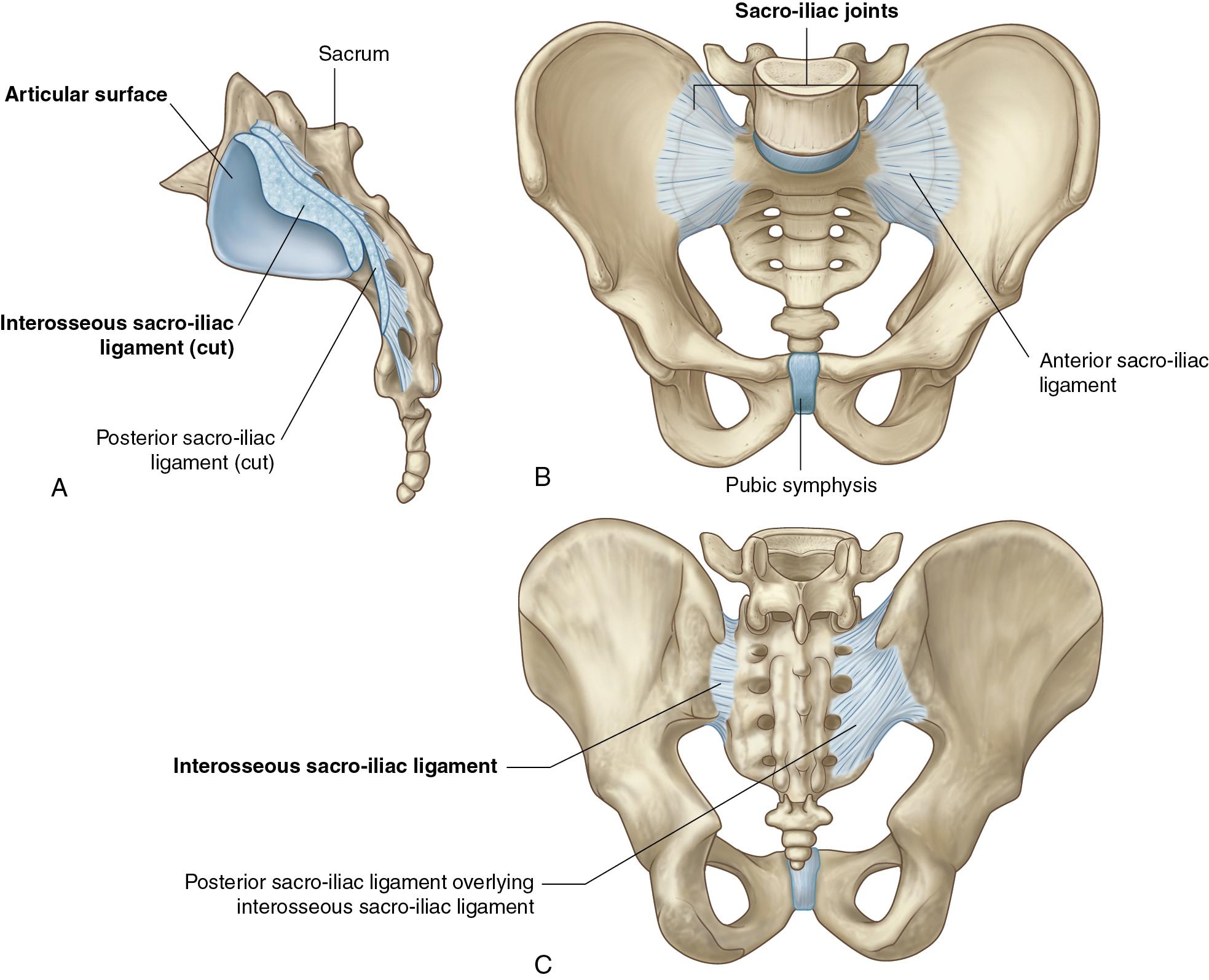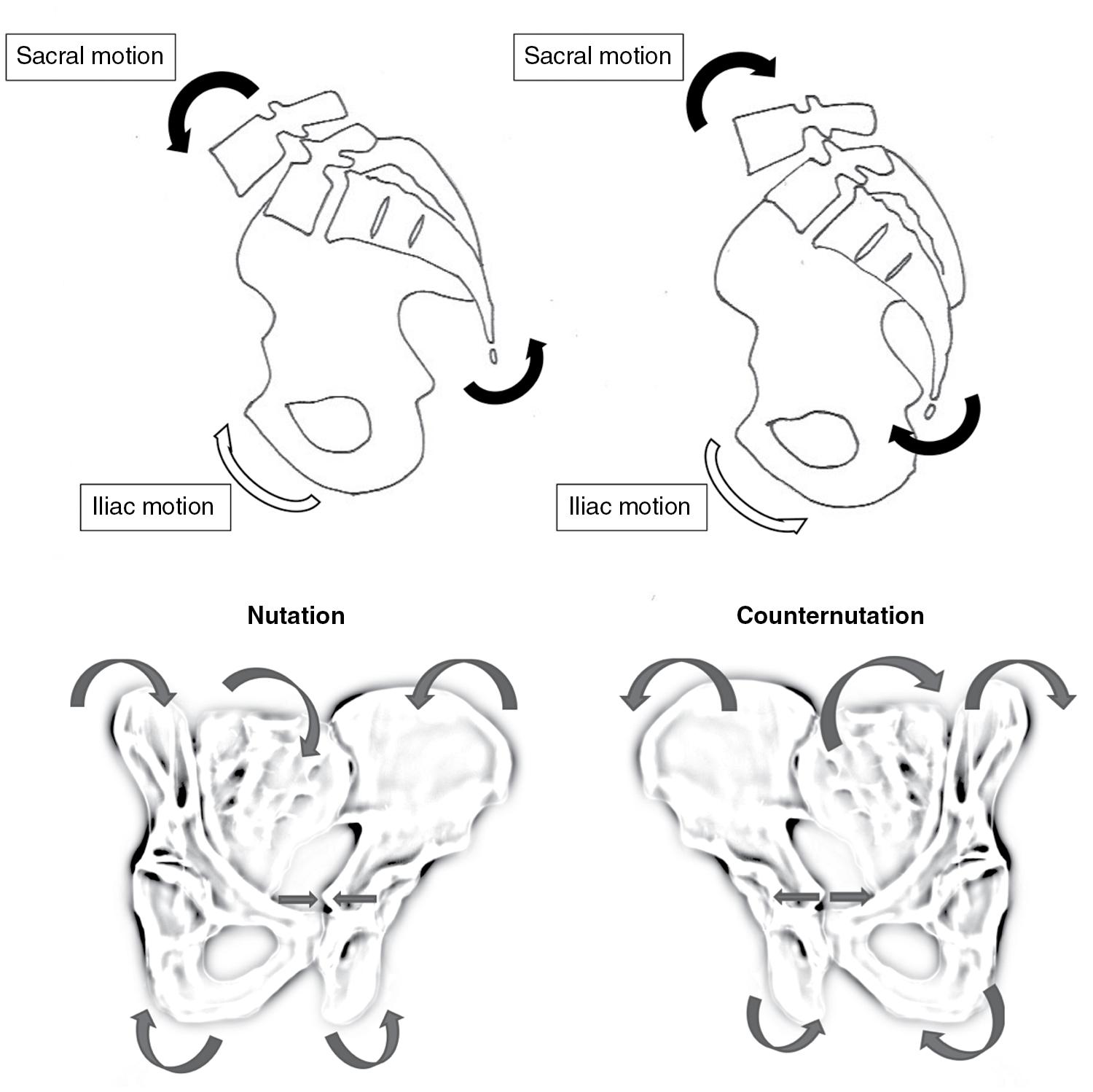Physical Address
304 North Cardinal St.
Dorchester Center, MA 02124
As sacroiliac joint (SIJ) pain presents with symptoms similar to hip and lumbar spine pathology, the SIJ is often overlooked as a pain generator.
Historically, poor outcomes have been reported with surgical intervention for SIJ pain due to high complication rates and inadequate pain relief.
Imaging studies that assess the SIJ are difficult to interpret and have low sensitivity and specificity for identifying symptomatic pathology.
Up to 15% of patients presenting to a spine clinic for evaluation for low back pain will have SIJ pain. (1) Pain originating from the lumbar spine, hip joints, and SIJ may be difficult to distinguish and more than one pain generator may be present in the same patient. In a study of patients evaluated in a spine surgery clinic, 82% had spine pathology but only 65% of patients had pathology limited to the lumbar spine—17.5% had a combination of spine and hip and/or SIJ pathology, 18% had hip and/or SIJ pathology without spine pathology, and 10% had pain from an unidentified source.
SIJ dysfunction is associated with a high burden of disease quantified at 0.5 quality-adjusted life years (QALYs). This burden is lower than chronic obstructive pulmonary disorder, coronary artery disease, angina, asthma, and mild heart failure, but comparable with other orthopedic conditions such as hip or knee osteoarthritis, degenerative spondylolisthesis, and spinal stenosis. Those with SIJ dysfunction report lower functional and utility scores and health-related quality of life (HRQoL) scores, compared to controls. (2)
The SIJ connects the sacrum to the ilium.
It is an integral part of the pelvic ring.
It transmits the body weight of the torso from the spine to the pelvis and subsequently the legs.
It is an amphiarthrosis (75% synovial, 25% fibrocartilaginous) and permits only minimal motion. The anterior or intracapsular portion of the joint contains articular cartilage, while the posterior or extracapsular portion is mainly ligamentous.
Structural changes occur from childhood to adulthood. The SIJ is flat through adolescence with changes in topography after puberty.
The sacral portion of the joint includes the fused portions of S1, S2, and variably S3.
The adult SIJ has variable morphology but is generally auricular shaped with the apex of the joint pointed anteriorly at approximately S2 ( Fig. 50.1 ).

SIJ motion is limited and is reported as less than 4º of rotation and less than 1.6 mm of translation. The primary motion of the SIJ is rotation of the sacrum around its transverse axis at S2 and is described as nutation (anterior rotation of the sacrum in relation to the ilium) and counternutation (posterior rotation of the sacrum in relation to the ilium).
Normal aging is considered to have a deleterious effect on SIJ mobility due to increasing fibrous connections and decreasing proportion of synovial joint surface to syndesmosis.
In pregnancy, the SIJ stabilizing ligaments become more flexible and allow for opening of the pelvis for delivery. Asymmetric laxity of the SIJ has been linked to pregnancy-related pelvic pain.
Ligaments (passive stabilizers)—the primary stabilizers of the SIJ include the sacroiliac, sacrotuberous, and sacrospinous ligaments. Joint load is resisted by deep anterior, posterior, and interosseous ligaments.
Muscles (active/dynamic stabilizers) include the gluteus maximus and gluteus medius, erector spinae, latissimus dorsi, biceps femoris, iliacus, psoas, piriformis, and oblique and transversus abdominus muscles ( Fig. 50.2 ).

Nociceptors have been identified within the SIJ capsule, ligaments, and subchondral bone. Innervation of the anterior intracapsular portion of the SIJ derives from multiple sources, including anterior contributions from the L2–S1 ventral rami, lumbosacral plexus, and superior gluteal nerve. The posterior aspect of the joint and surrounding ligaments are innervated by lateral branches of the dorsal rami of S1–S3, with additional innervation from L5 and S4 dorsal rami in some individuals.
SIJ dysfunction is a term commonly used to describe pain related to poor functioning of the SIJ. Symptoms that suggest SIJ-related pain include:
Pain with positional changes (sitting to standing, turning in bed), which often improves when lying down
Pain when sitting on hard surfaces
Pain localized to the region between the posterior superior iliac spine (PSIS) and the sacral sulcus, known as Fortin’s area
Pain with radiation to the groin, buttock, and posterior thigh
Pain above L5 suggests another pain source
Approximately 20% of patients with SIJ pain report radiation of pain distal to the knee
A wide range of etiologies may be responsible for SIJ pain and may involve the intraarticular or extraarticular portions of the joint or both. Etiologies include:
Direct trauma such as a fall on the buttocks or a motor vehicle accident
Repetitive microtrauma
Disorders of joint hyperlaxity such as Ehlers-Danlos syndrome
Pregnancy-related laxity of the pelvic ligaments
Inflammatory arthropathies such as ankylosing spondylitis
Major trauma
Degenerative arthritis
Infection
Tumors
Idiopathic
Iatrogenic (secondary to iliac bone graft harvest, after lumbar or lumbosacral fusion)
Become a Clinical Tree membership for Full access and enjoy Unlimited articles
If you are a member. Log in here